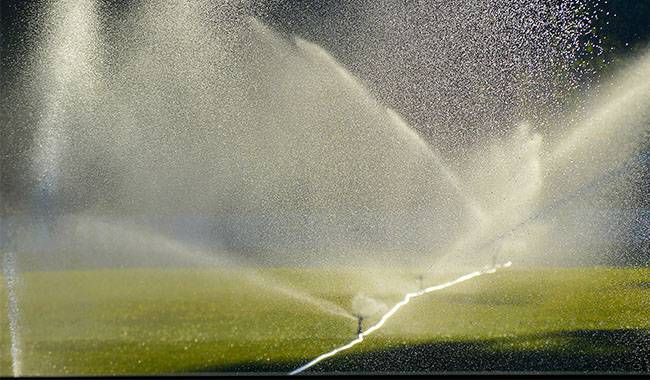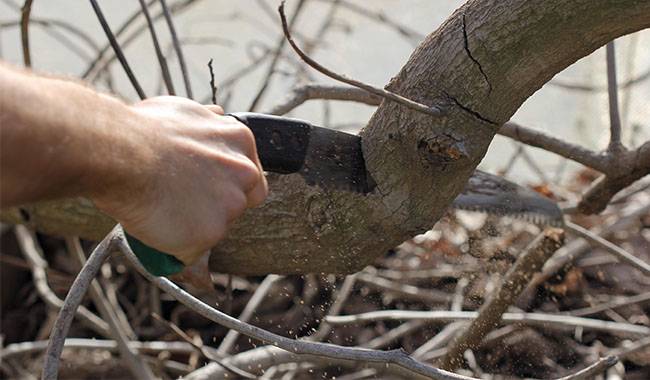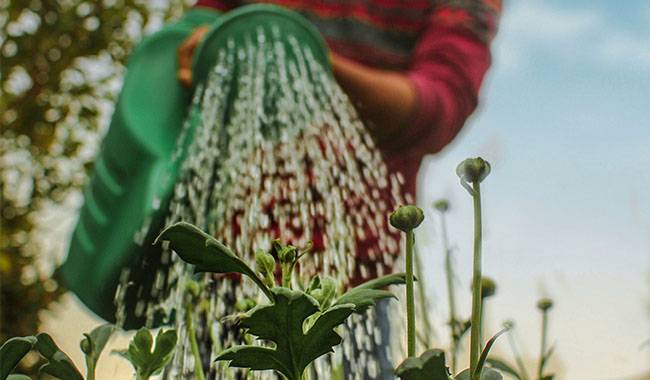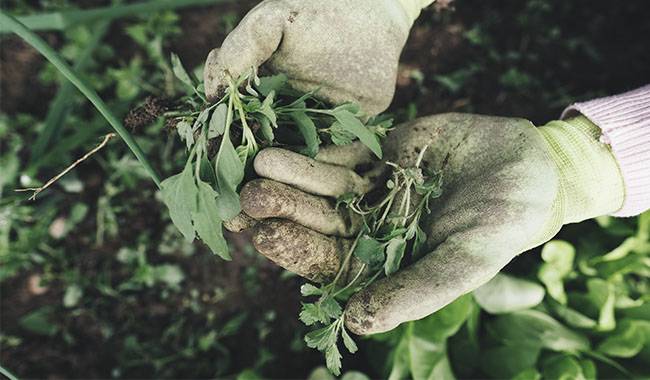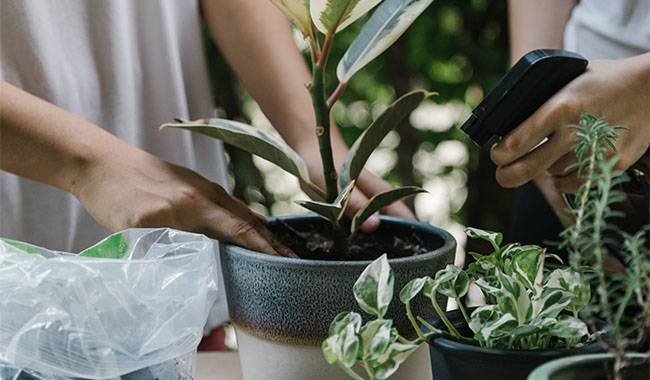
Summer is in full swing. The garden is mostly finished, but summer is the hottest time of the year. Thermometers often read 86 °F (30°C), hindering the growth and development of our plants. So, how can we help them survive the heat? Tips on how to help plants survive the heat that we share in this ThumbGarden article. This can also be a difficult time for indoor plants. You will learn How to Help Plants Withstand High Temperatures in the ThumbGarden article.
GENERAL RULES FOR WATERING IN HOT WEATHER
First, our plants need regular and heavy watering in this weather. It is no secret that many vegetables consist mainly of water. In hot weather, a lot of water evaporates from the surface of the leaves and plants become dehydrated. The quality of the fruit is not a factor.
In addition, plants need nutrients from the soil to function properly, and these nutrients are provided by water. Without water – without nutrients, so without good watering, plants will wilt and wither.
There are proper watering conditions for all plants in high temperatures.
- Do not water with cold water in hot weather, only with standing water from the sun. The roots of the plant cannot absorb cold water from the well and cannot provide cold water for the plant.
- It is better to water less, but more, by volume. Surface watering will cause roots to develop at the top (closer to the water) and this will cause damage if the soil is overheated or loose.
- Water early before the arrival of the hot sun, which can leave burns on the leaves, or in the evening after 17:00-18:00. Watering too late (overnight) can cause fungal diseases because the water on the leaves does not have time to dry out before it gets dark and the temperature drops.
- It is necessary to take into account the development of the root system of each plant and its depth. For example, tomatoes have roots up to 40 inches (1 meter) below the ground, so it is best to water at the roots once a week, but so that the soil is soaked to a greater depth. To ensure proper use of water, make furrows about 4 inches (10 cm) from the roots. On the other hand, cucumbers need to be watered more frequently than every 3 days in hot weather. Their root systems do not develop deeper than 12 inches (30 cm), so it does not make sense to saturate the soil under the cucumbers too deeply.
- Loosen the soil after each watering to ensure the soil is oxygenated.
- You should also consider the soil on the plot. If the soil is sandy and lightly clayed, water at least twice a week in hot weather. Be sure to loosen the soil after each watering. On the other hand, if the soil is heavy, watering once a week is enough, but don’t stop loosening the soil every 3-4 days.
Important! To determine if the soil is dry, squeeze it with your fist. If a block has formed, then the soil is still full of water, if it has crumbled, then it is time to start watering.
MULCH WILL HELP RETAIN MOISTURE LONGER
Mulching the soil will help retain moisture near the roots of the plant for a longer period of time. This is accomplished by placing a protective layer of organic or synthetic material around the trunk of the plant. This protects the soil from drying out and prevents the growth of weeds, which can take away additional moisture from cultivated plants. The organic mulch will also provide nutrients for worms and the plants themselves through decomposition.
You can mulch the soil with store-bought products or use inexpensive natural materials: nutshells, pine bark, pine needles, weeds, seed shells, leaves, straw, cones, wood chips, etc.
DRIP IRRIGATION IN THE GARDEN WITH YOUR OWN HANDS
Many gardeners use a simple device made from plastic bottles and old hoses to ensure a continuous supply of water to the soil. This is a homemade drip irrigation system, commonly known as “lazy watering”.
WICK WATERING METHOD IN THE GARDEN
Any kind of containers such as a barrel, bucket, or 1.32 gal (5 liters) bottle should be dug out around the plants and filled with water. Dip a strip of cloth into it, the width of which will determine the intensity of the watering. Bury the cloth to a shallow depth near the roots. The container should be covered to prevent the water from evaporating. Water will flow through the cloth underground and nourish the roots of the plant.
DRIP IRRIGATION WITH PLASTIC BOTTLES
You can pierce the side of the plastic bottle with an awl. Dig them out close to the plant so that all the perforations are below ground level and fill them with water (this is best done when preparing the plant so that the roots are not accidentally damaged later). Through the side holes, water will seep into the soil, moistening it as needed. The only thing you have to do is to add water to the bottle.
The following method is the easiest to do. Fill a bottle with water and cork the neck with foam rubber instead of a cork. Place it on its side under the trunk of the plant and the water will gradually seep in, providing a constant supply of moisture to the soil.
You can use a corrugated electrical conduit or an old water hose for drip irrigation. Pierce the entire length of the surface in various places. Next – either bury the pipe shallowly or place it in the ground. The end of it can be attached to the pipe or lowered into a bucket placed on high ground. Place the pipe or hose along the bed. The automatic irrigation system is ready.
SPECIFICITY OF WATERING PLANTS IN THE GREENHOUSE
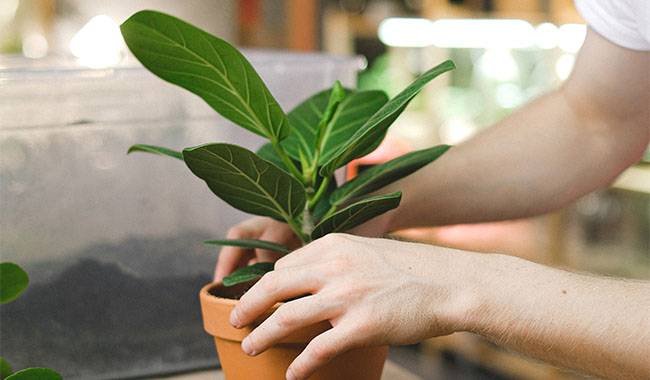
Plants planted in the open air are best watered in the evening, while plants in a greenhouse should be watered in the morning. Water irrigated in a greenhouse should be warmer than water irrigated outdoors. This is because the temperature indoors is warmer than outdoors. Remember to place open buckets or buckets next to greenhouse plants to create a favorable microclimate.
On particularly hot summer days, mulching material can help lower the temperature inside the greenhouse. It can be stretched over and attached to the roof or hung inside as a curtain. The idea is to create a barrier that blocks direct sunlight. Keep the windows and doors of the greenhouse open to avoid creating thermal insulation.
A less costly method is to treat the exterior of the greenhouse with a solution of water and chalk in the ratio of 2.11 gal (8 liters) of water to 200 grams of chalk. This can be used to reduce the transmission capacity of the sun. When this chalk is no longer needed, it can be washed off with water.
When it is particularly hot and there is no wind, many gardeners put fans on the floor of the greenhouse.
HOW TO HELP PLANTS SURVIVE THE HEAT
Houseplants also need our help in the heat.
- The easiest way is to put your plants on a balcony or log cabin to give your plants a natural temperature difference between night and day.
- In hot weather, we try not to replant our houseplants.
- You can do anything to lower the temperature of the room: connect an air conditioner, put moist expanded clay trays, use a fan.
- Spray the plants frequently with a sprayer to increase the humidity in the air.
- Remove the plants from the windowsill (protect them from direct sunlight), hang blinds and reflective film.
- Water in the morning and evening.
- Healthy houseplants will tolerate heat more easily than weakened plants, so try to improve their condition. Regular treatment (usually every two weeks) with stress-resistant biologicals and pest control products during the summer months will help.
Dear reader, we can’t change the weather conditions or lower the temperature outside, but we can help plants survive the heat. So how do you help your plants during the hot summer months? Share your experiences in the comments of the article.




